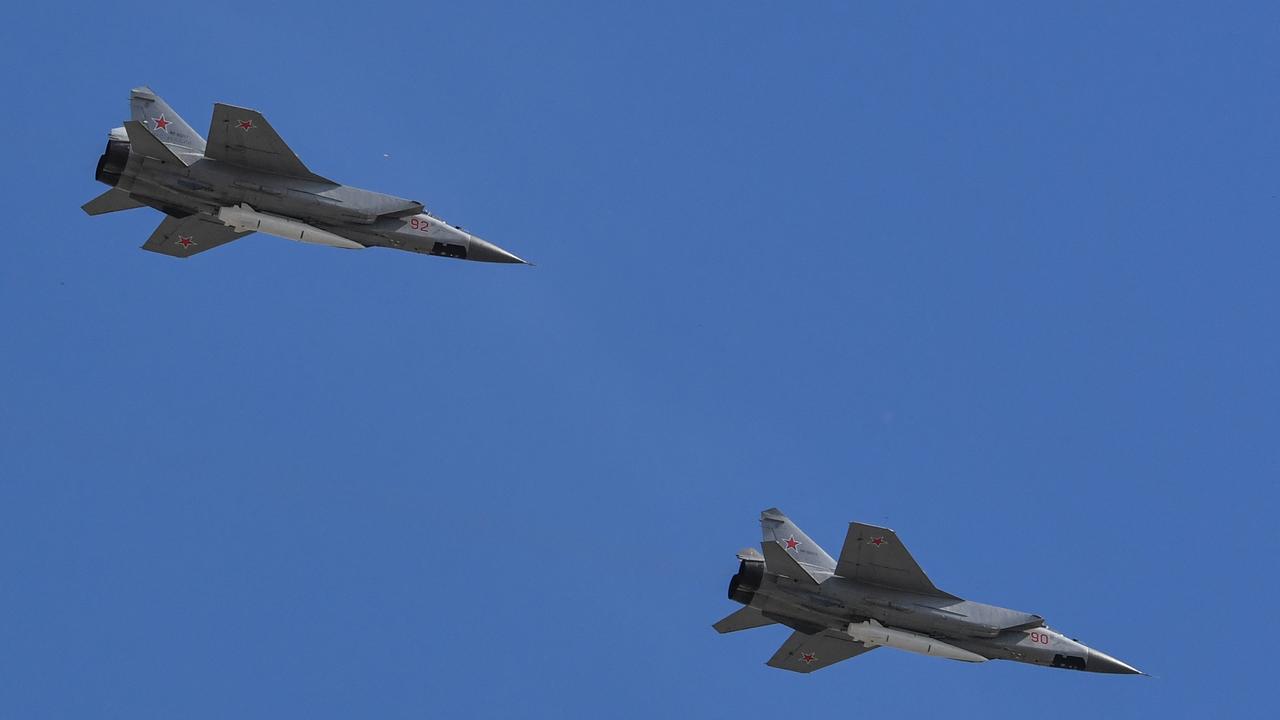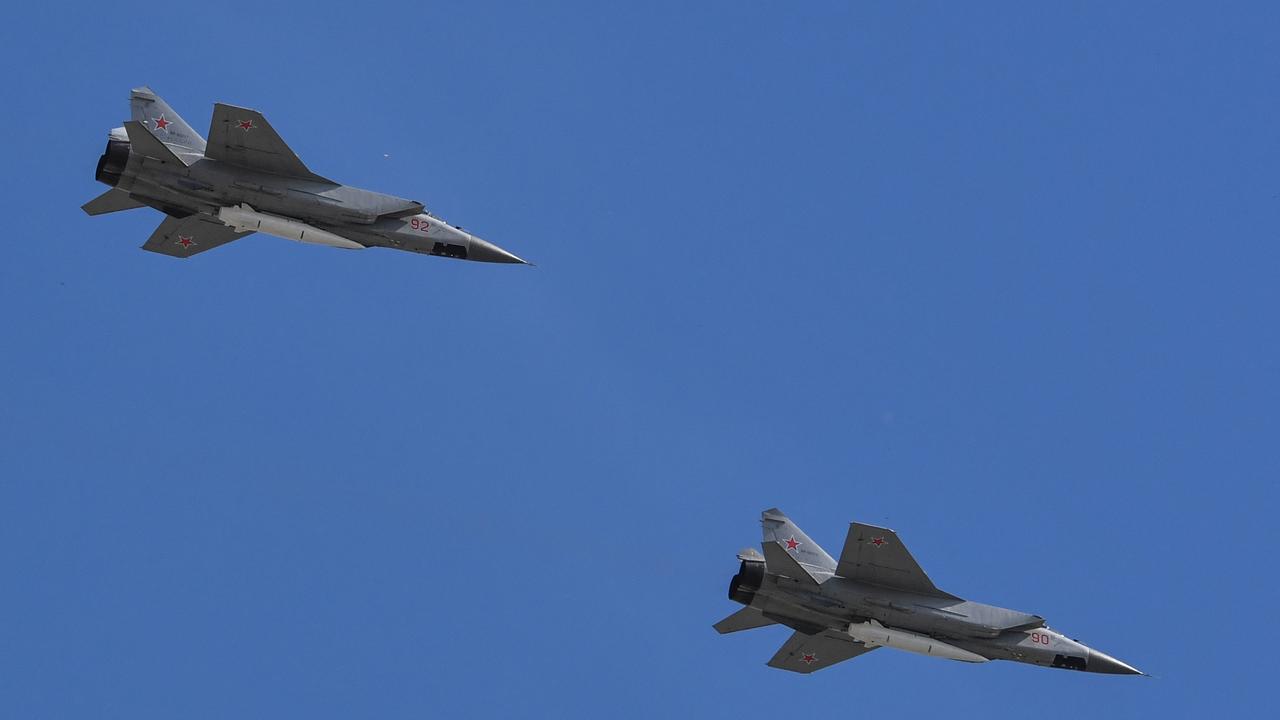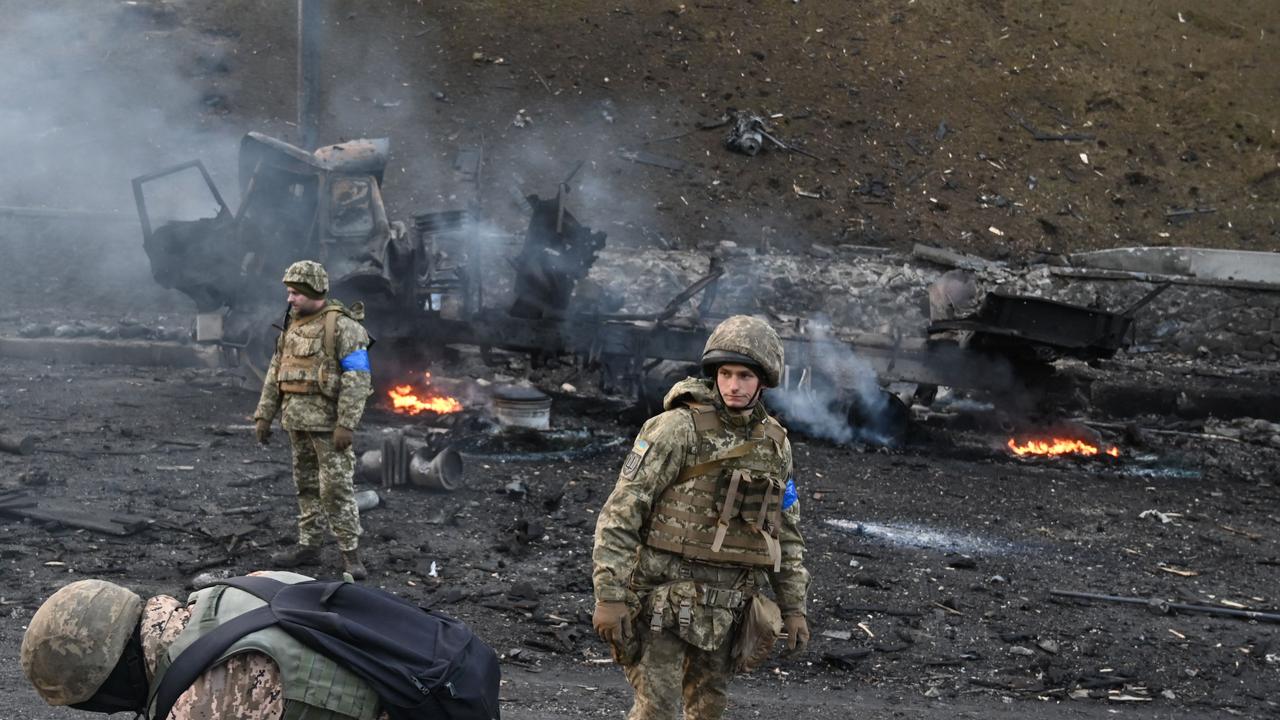Russia unleashes hypersonic ‘dagger’ missiles in Ukraine
Last week, Russia fired hypersonic missiles at an ammunition depot in Ukraine. What is this technology – and should we be worried?

Russia has said it has twice deployed hypersonic missiles in the past week in its invasion of Ukraine.
The “Kinzhal” hypersonic missiles – which means “dagger” in English – were used to target an ammunition depot in the west of Ukraine and a fuel storage site in the south.
This is bleeding-edge military technology that only the US, Russia and China possess. It is the first time it has been deployed in war.

So just what are hypersonic missiles and how concerned should we be about them?
Five times’ the speed of sound
“Hypersonic” is anything that moves at least five times as fast as the speed of sound, or Mach 5.
That’s over 1.7km in a second, or almost seven times faster than a commercial jet.
It’s a figure near the reported top speed of the Kinzhal hypersonic missiles deployed by Russia. The Kinzhal missile is a hypersonic cruise missile, which is launched from a jet and uses a “scramjet” at one end of the missile to propel it until it hits its target.
The second, faster kind is the hypersonic glide vehicle, which is launched on a rocket from the ground, separates from the rocket beyond the atmosphere, falls to pick up speed and then glides in the upper atmosphere until it is over its target, at which point it will dive down towards it.
At this stage of descent, the experts say that the glide vehicle can reach speeds between Mach 8 and Mach 10 – that is, between eight and 10 times the speed of sound.
The speed in itself is not new technology. More traditional weaponry such as intercontinental ballistic missiles (ICBMs) can travel faster. And like ballistic missiles, hypersonic missiles can be loaded with conventional or nuclear warheads.
Where hypersonic missiles’ true danger lies
However, what makes the hypersonic missile particularly dangerous is its manoeuvrability. Traditional ballistic missiles follow a parabolic arc, making it possible for the party being attacked to calculate the trajectory of the missile and intercept it. Hypersonic missiles, on the other hand, are manoeuvrable – they can turn, change altitude, and fly so as to avoid radar detection.
“It’s a different scenario,” said Rich Moore, senior engineer at RAND Corporation, a US defence think tank, in a 2017 video. “The combination of manoeuvrability and the speed makes hypersonic missiles unpredictable and extremely difficult to defend against.
“It can keep its target a secret until the last few seconds of its flight.”
Professor John Blaxland, former head of the Strategic and Defence Studies Centre at the Australian National University, told news.com.au that hypersonic missiles can skirt traditional defence systems.
“In the technological evolution of weapons – offensive and defensive weapons systems – hypersonics are currently at the top – it’s got the advantage at the moment. The countermeasures to hypersonics are not mature.”

The unfathomable speed and momentum of a hypersonic missile is another source of its destructiveness, Dr Sidharth Kaushal of the Royal United Services Institute, a UK-based security think tank, told Force News.
“The combination of accuracy and really high kinetic energy makes it possible to break through targets with a hypersonic missile that previously would have needed a nuclear-level payload or at least something approaching it.”
Why did Russia deploy the missile?
US Defence Secretary Lloyd Austin questioned Russia’s use of a hypersonic missile.
He said on CBS News: “I don’t think this, in and of itself, will be a game-changer. You question why [Russian President Vladimir Putin] would do this. Is he running low on precision-guided munitions? Does he have complete confidence in the ability of his troops to re-establish momentum?”
At a conference with business leaders, US President Joe Biden outlined Russia’s hypersonic move.
“They’ve just launched their hypersonic missile because it’s the only thing they can get through with absolute certainty,” Mr Biden said.
“As you all know, it’s a consequential weapon but with the same warhead on it as any other launched missile. It doesn’t make that much difference except it’s almost impossible to stop it. There’s a reason they’re using it.”

UK Defence Intelligence said: “Russian claims of having used the development Kinzhal is highly likely intended to detract from a lack of progress in Russia’s ground campaign.”
Prof Blaxland said Russia’s choice to deploy hypersonic missiles was intended to send a signal to NATO.
“NATO knows that it doesn’t have an immediate response capability.
“The threat of using them and the purported use of them in Ukraine is actually about sending a signal … that the Russians are prepared to escalate, go beyond where they’ve been, and actually take things further.”
How could this affect Australia?
Prof Blaxland said hypersonic missiles, especially China’s possession and leading development of them, are a “genuine concern” for Australia.
This concern is one of the motivations behind the suggestion in the 2020 defence strategic update that Australia acquire its own hypersonic weapons, he said.

At the launch of the update, the Prime Minister said: “We will also invest in more highly integrated and automated sensors and weapons, including potential development of hypersonic weapons systems.”
Prof Blaxland said that AUKUS has a role to play in this.
“People tend to see AUKUS as about nuclear propulsion for submarines, but precision long-range and hypersonic missile technology, developing the capability in Australia, the ability to have stocks of these weapons in Australia, is what AUKUS is probably going to be able to deliver in the short to medium term.”
This gradual proliferation of hypersonic weapons technology, despite calls otherwise, does not look as if it will slow down in the immediate future.
Danny Pronk, a senior research fellow at the Danish Clingendael Institute, an international affairs think tank, wrote in 2020 that China may share knowledge with Iran.
“Even though Iran does not appear to be developing hypersonic missiles, its strengthening military ties with China certainly provide the scope to do so.”





